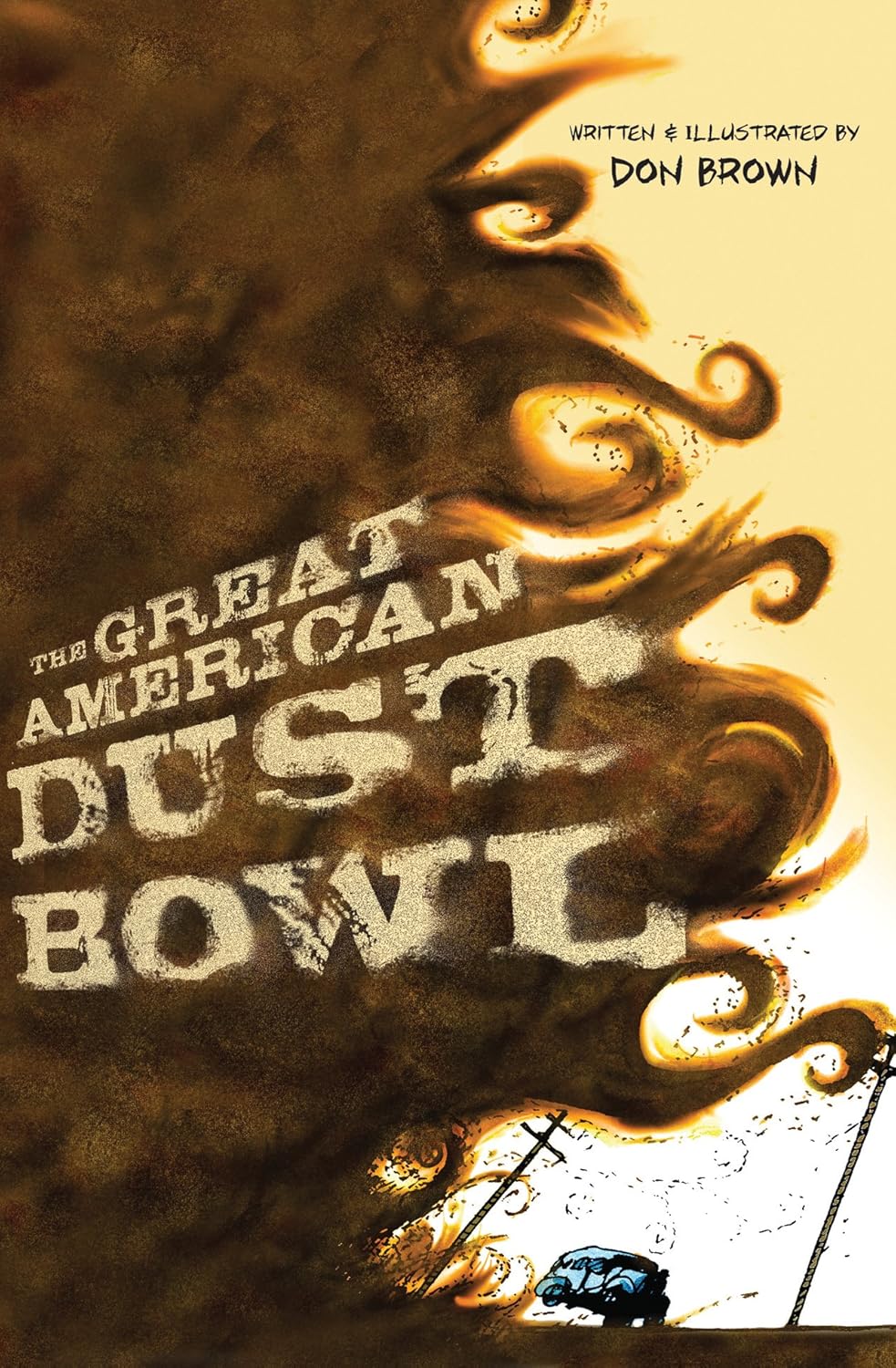reviews from Booklist - Concise and clear in imagery, text, and layout, Brown’s (Henry and the Cannons, 2013) nonfiction examination of the Dust Bowl contextualizes its genesis in geological and cultural history, the dynamics of its climatological presentation, and the effects on both the landscape and Depression-era High Plains farmers. The pen-and-ink artwork, digitally painted in burnished and dusty brown and yellow hues—and the shock of blue that comes with the rain that eventually clears the air—is combined with swirling text, along with well-researched and minimally descriptive explanations and occasional speech balloons attributed to anonymous residents and observers. The brevity of this presentation heightens rather than diminishes its power to evoke the history, and an ample list of resources provides plenty of opportunities for further research. A closing photo of the 2011 dust storm in Arizona emphasizes that the Dust Bowl wasn’t an isolated incident. This is a complete visual package, from the whirly, mud-colored cover design through the sudden reintroduction of color only after the dust storms abate. The Dust Bowl, as experienced by its survivors, truly comes to life in this compelling look at an important moment in American history.
 The highly acclaimed, longtime editor and publisher of the Nation and the author of the National Book Award–winning Naming Names (1980) here takes on a compelling subject, one nearly ideal for him and one that will appeal to his many adherents and deservedly earn him new readers. Although a bit repetitive, this heavily illustrated, entertainingly written look at poltical cartoons is both personal—Navasky’s experience with controversial drawing as well as writing is considerable—and thoroughly researched. It is also deeply insightful, particularly in the discussion of caricature, a unique form of satire. Though the book’s main focus is on Americans (Herblock, Edward Sorel, David Levine), Navasky also discusses well- and lesser-known twentieth-century cartoonists from around the world, and his inclusion of a time line of their persecution (and prosecution) is eye-opening and lends closure to his persuasively made conclusions.
The highly acclaimed, longtime editor and publisher of the Nation and the author of the National Book Award–winning Naming Names (1980) here takes on a compelling subject, one nearly ideal for him and one that will appeal to his many adherents and deservedly earn him new readers. Although a bit repetitive, this heavily illustrated, entertainingly written look at poltical cartoons is both personal—Navasky’s experience with controversial drawing as well as writing is considerable—and thoroughly researched. It is also deeply insightful, particularly in the discussion of caricature, a unique form of satire. Though the book’s main focus is on Americans (Herblock, Edward Sorel, David Levine), Navasky also discusses well- and lesser-known twentieth-century cartoonists from around the world, and his inclusion of a time line of their persecution (and prosecution) is eye-opening and lends closure to his persuasively made conclusions.
No comments:
Post a Comment